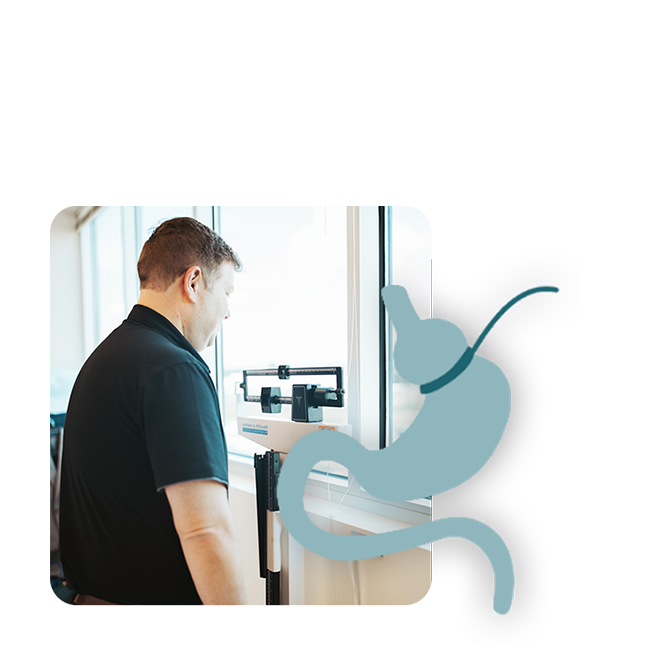The gastric banding surgery is a bariatric procedure that can result in weight loss but does not involve any cutting or stapling of the stomach. It consists of placing a silicone band-like device around the upper part of the stomach to reduce food intake and promote weight loss. Since this procedure does not involve any physical alteration to a patient’s anatomy, it is viewed as being simple and safe while also being reversible.
Gastric Band
Gastric Band
The gastric band works by placing a silicone device around the upper part of the stomach. The band, which is inflatable, is connected to tubing that then connects to an access port. This access port is placed under the skin on the abdominal wall. After insertion, the surgeon will inject a saline solution into the band through the port. The saline causes the band to tighten and thus results in patients experiencing a faster feeling of fullness.
The gastric band weight loss surgery procedure takes about 30 minutes to perform, and patients can expect to go home the same day of their procedure. Patients can return to work immediately and can resume normal activities in approximately two weeks from the device insertion.


Before considering the gastric band, it is important to be familiar with the potential risks of bariatric procedures. Risks vary based on the health of the patient.
- Minor Complications
- Major Complications
- Band/tubing leak
- Esophageal spasm
- Gastroesophageal reflux disease (GERD)
- Port-site infection
- Development of gallstones
- Weight gain or failure to lose satisfactory weight


- Migration of device or band slippage
- Pouch dilation
- Erosion of the band implant into the wall of the stomach
- Erosion of the tubing or bowel obstruction
















